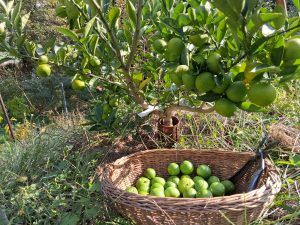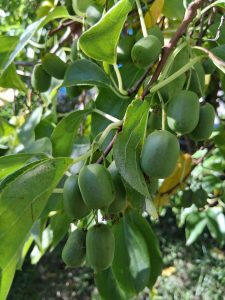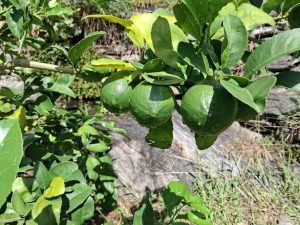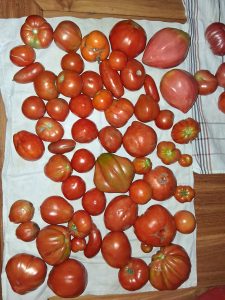This year the spring arrives slowly in Ticino, at night it is still cold (5-7 degrees).
Some pictures of 20.03 to observe the very first leaves on some fruit trees, small and big.
The small fruits

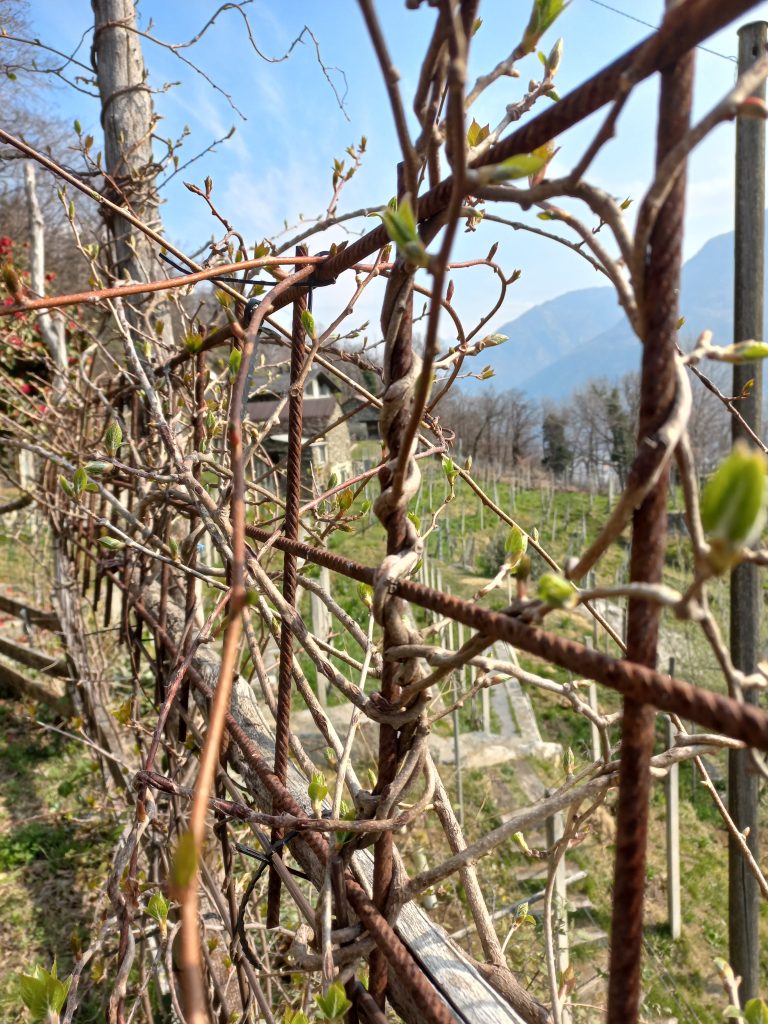
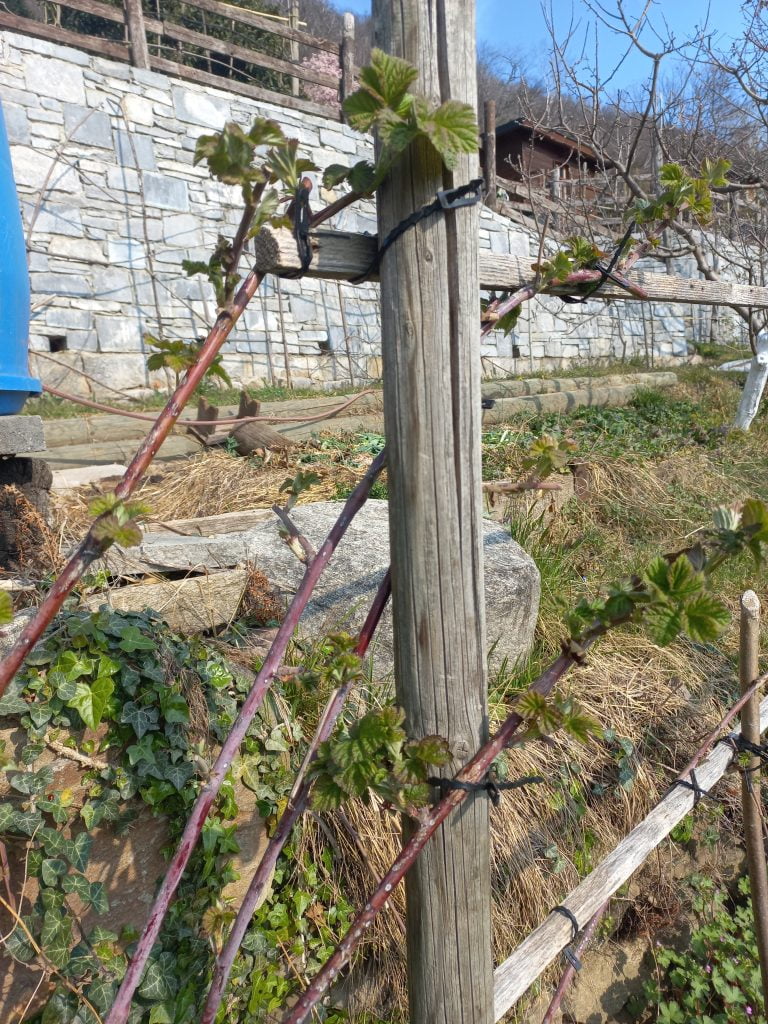
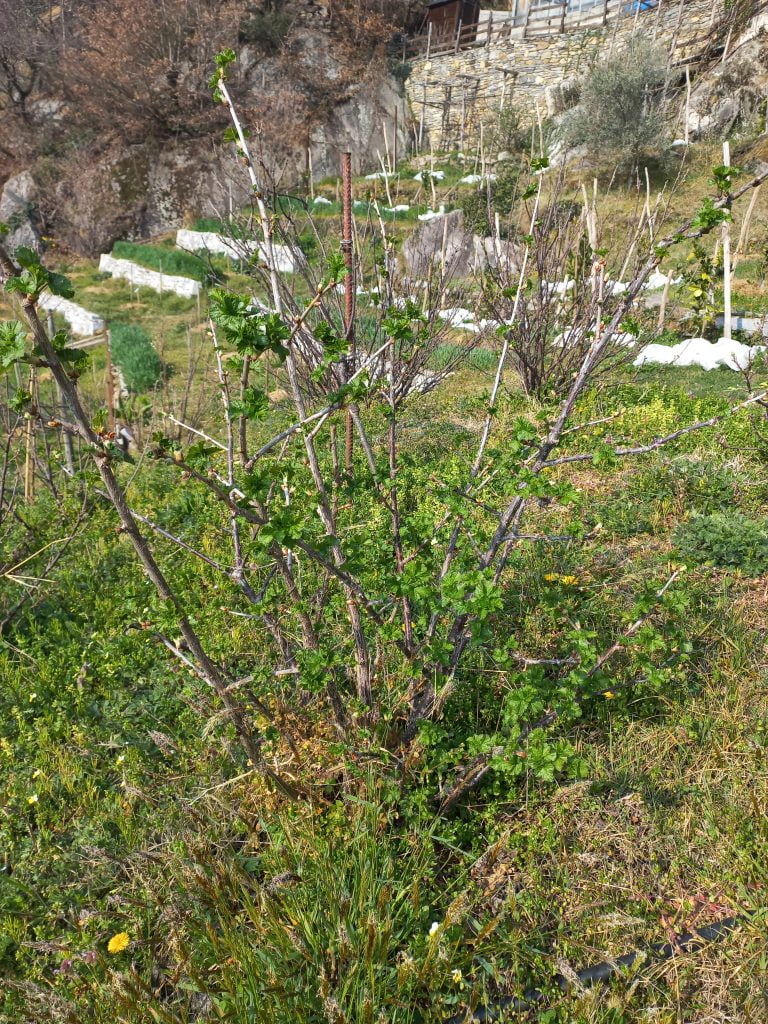
Of all the currant bushes, it is always the fastest to start.
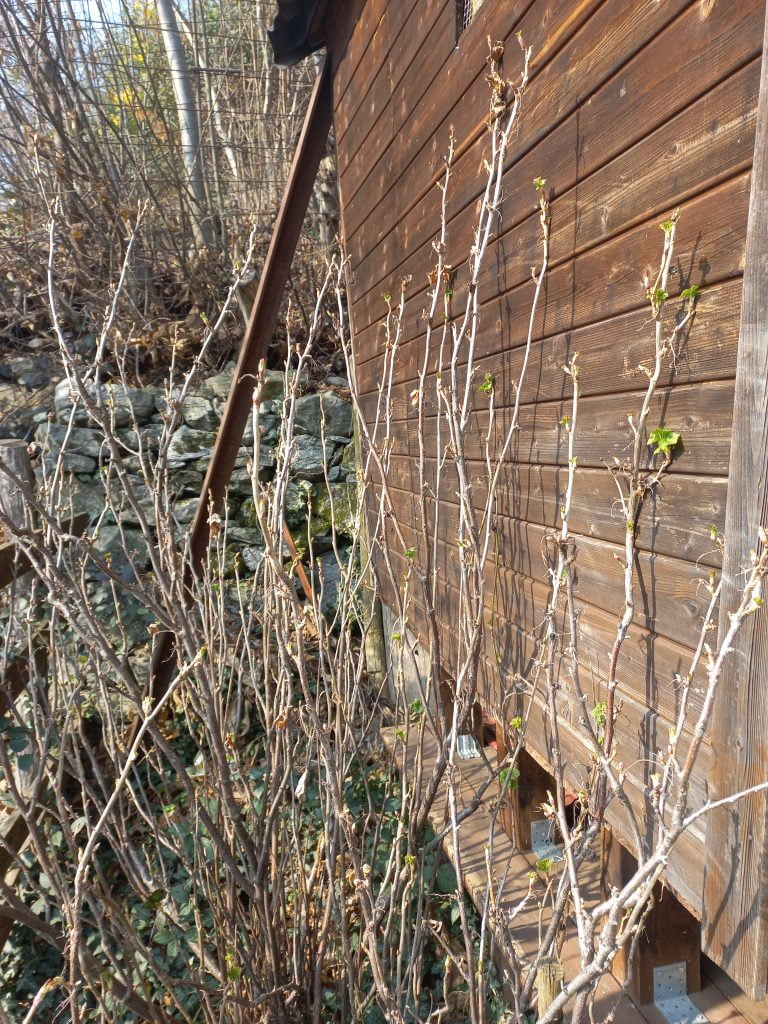
Despite a more sheltered and warm position, it starts slowly.
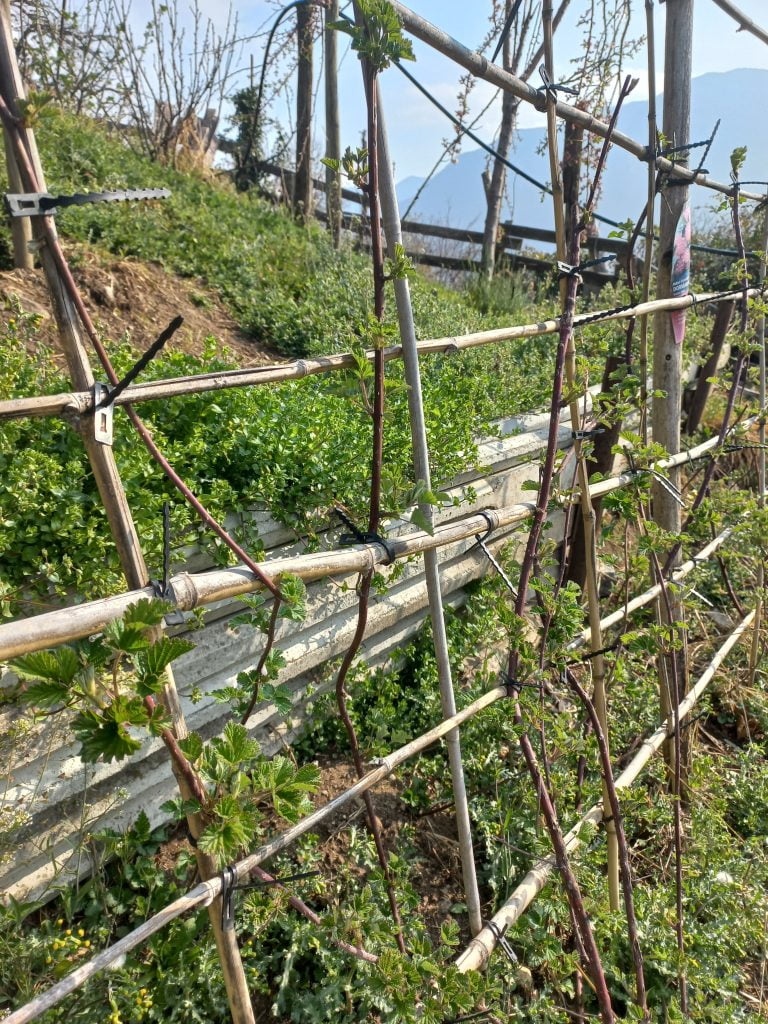
A hybrid of Dorsett raspberry with a wild American red mulberry (Rubus parviflorus).
Very vigorous and productive, and unfortunately also very thorny!
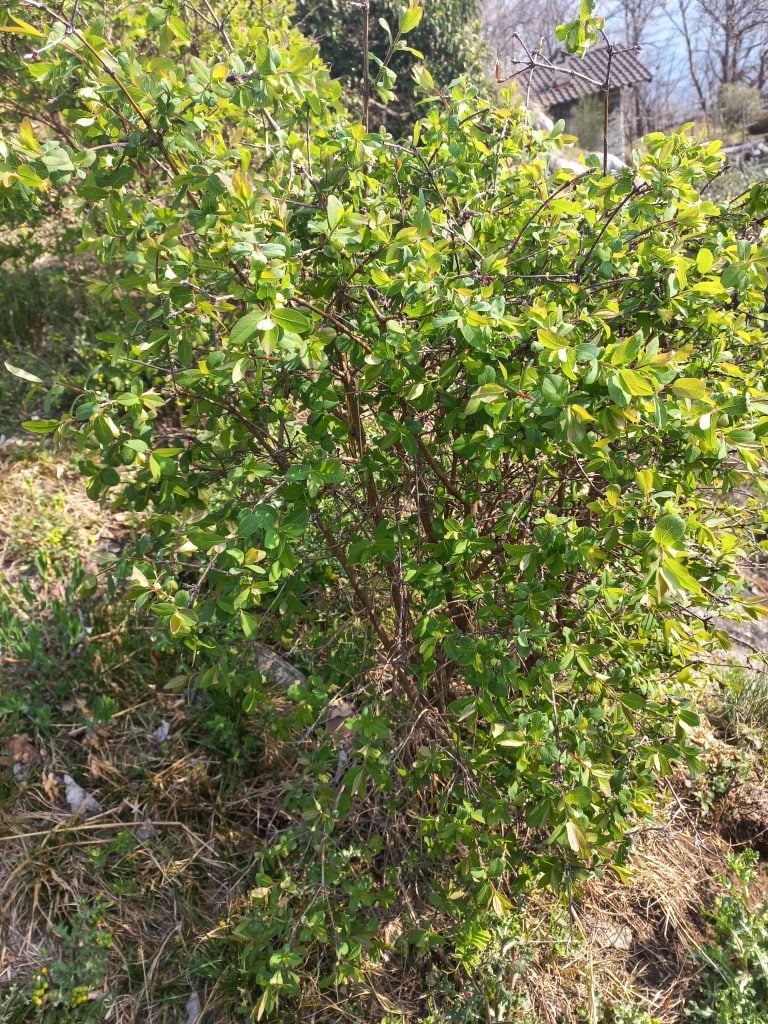
Already covered with leaves, it is the earliest of all, the fruits will be ripe already in May.
Too bad they are too bitter, barely edible (in my opinion… but to each his own).
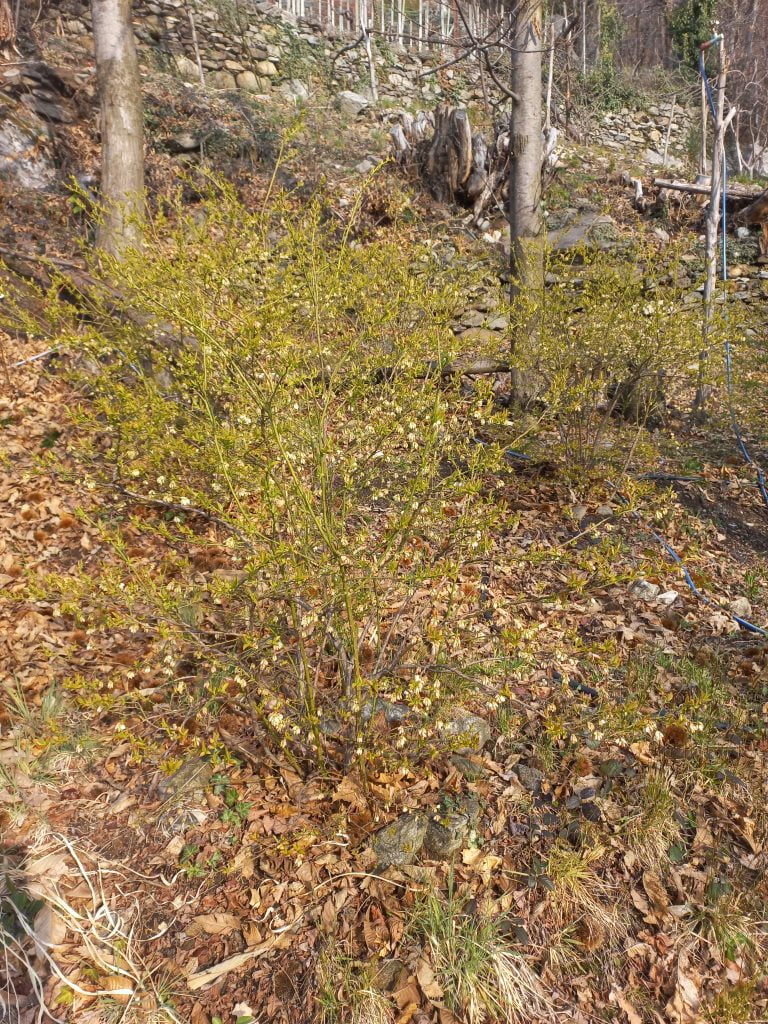
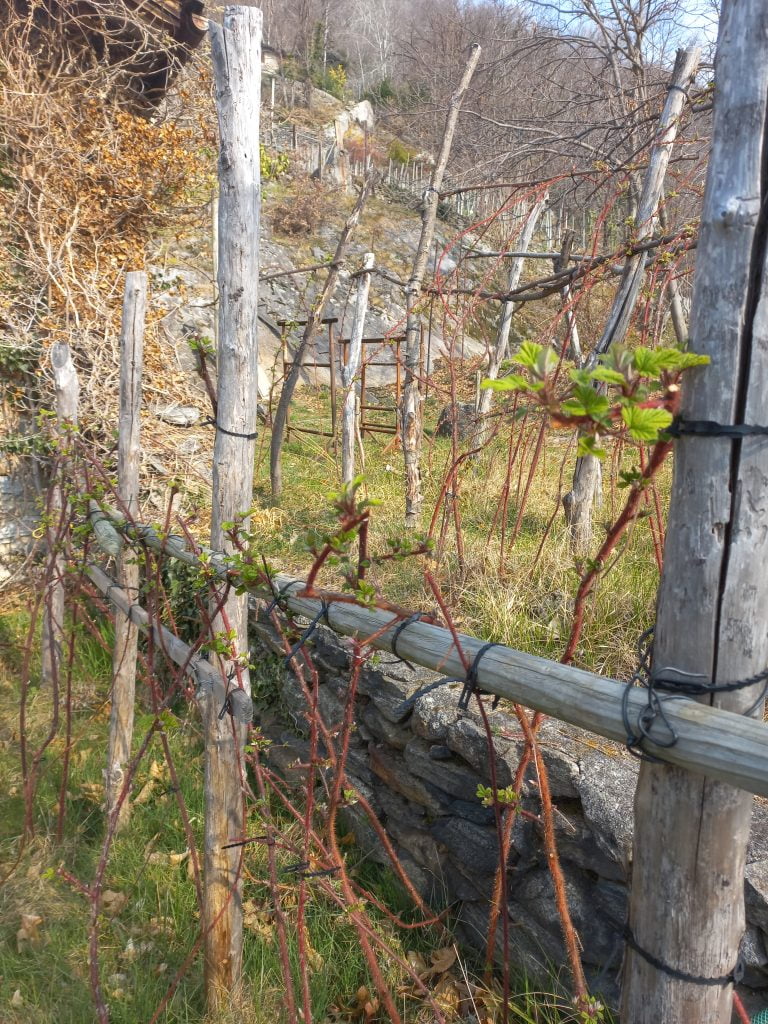
I don’t know a common name for it, so it’s called “sticky raspberries”.
It spreads very quickly if you let it. 3 small plants 3 years ago, 4 rows today.
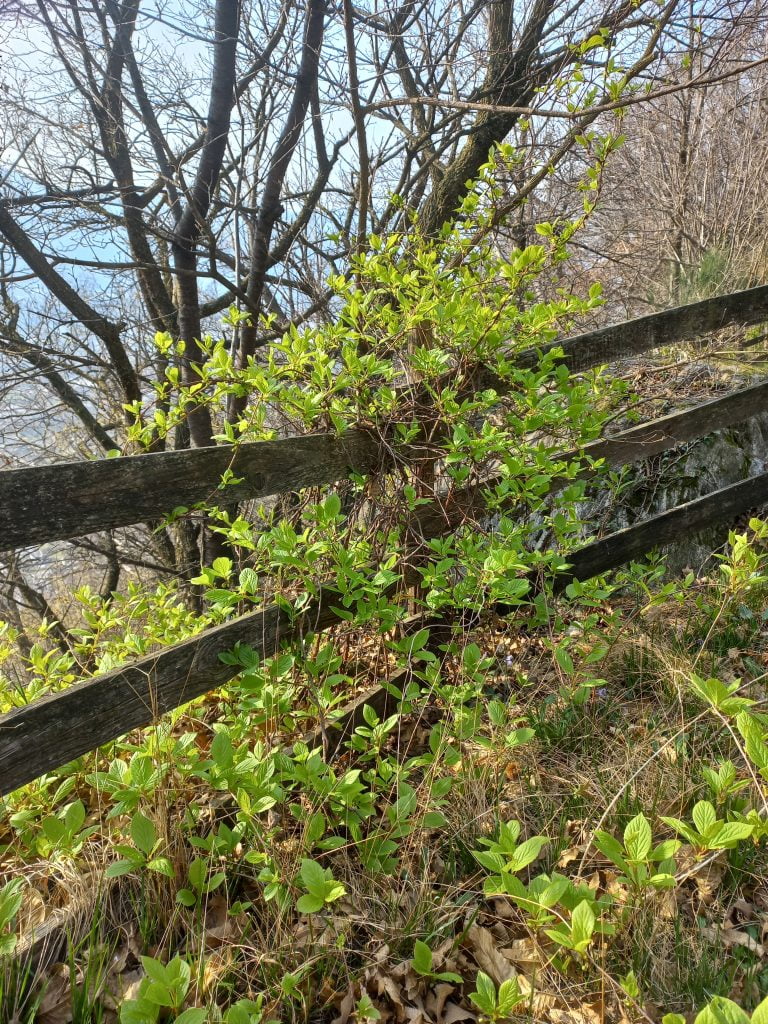
Is there a flavor missing? The leaf is very salty!
Fruit trees
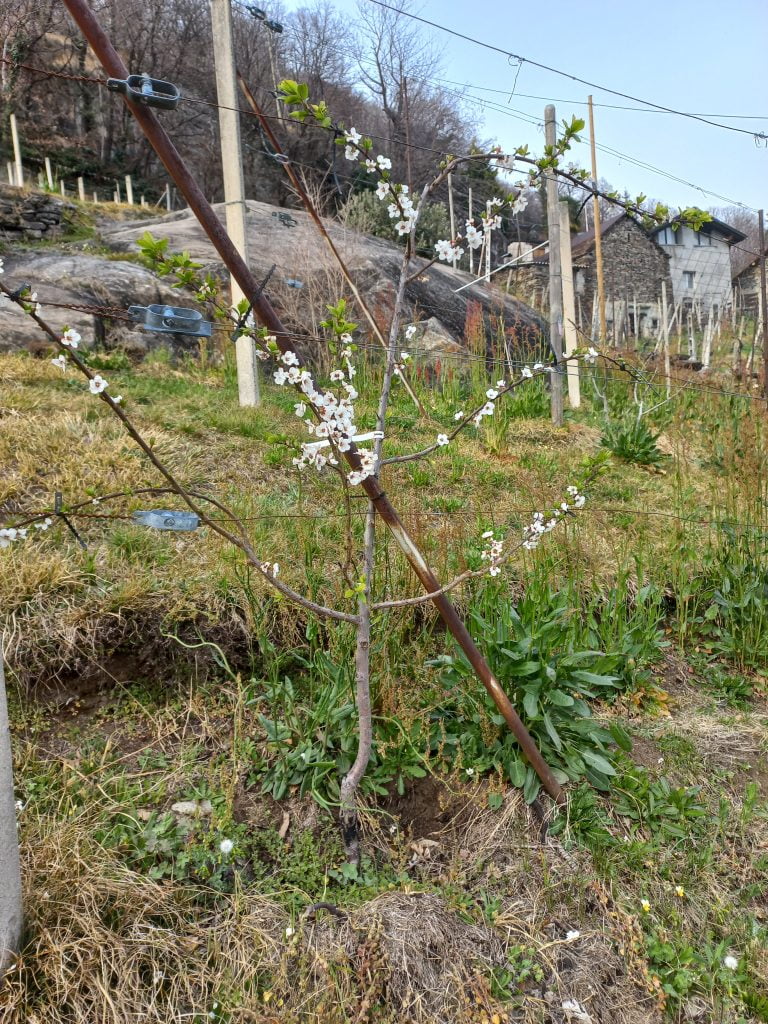
A natural plum/apricot hybrid (Prunus cerasifera x Prunus armeniaca), very ancient and introduced from China in 1700. It is cultivated only in Italy.
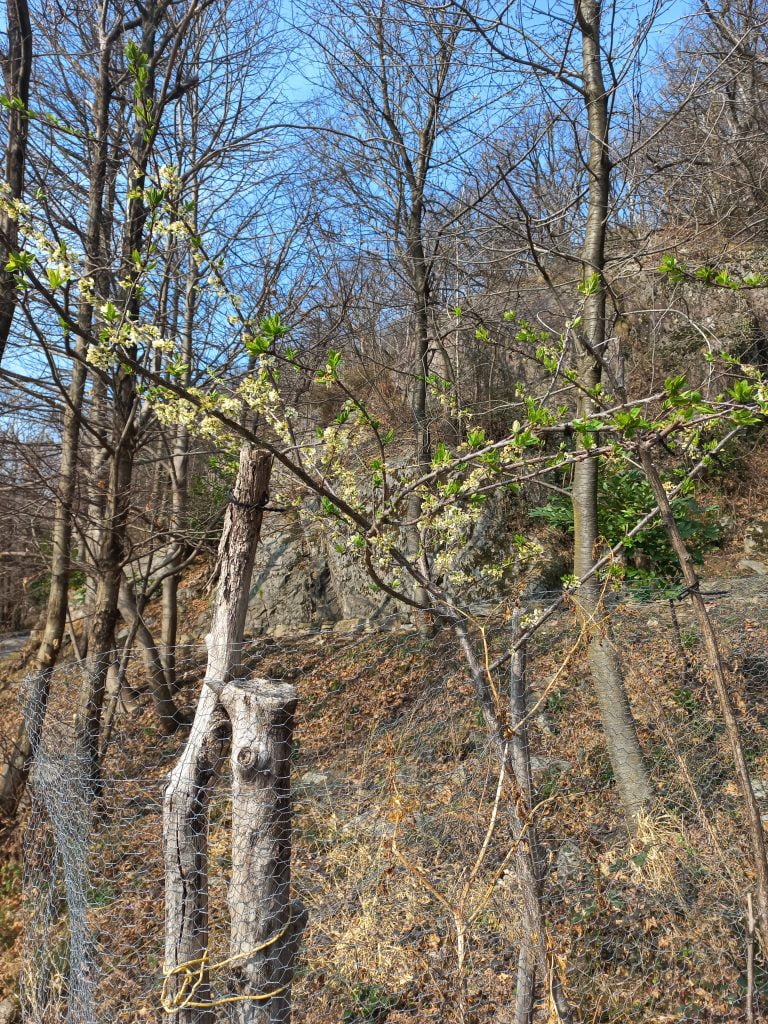
It is planted in the woods, so it is protected from deer. Height of the fence must be two meters!
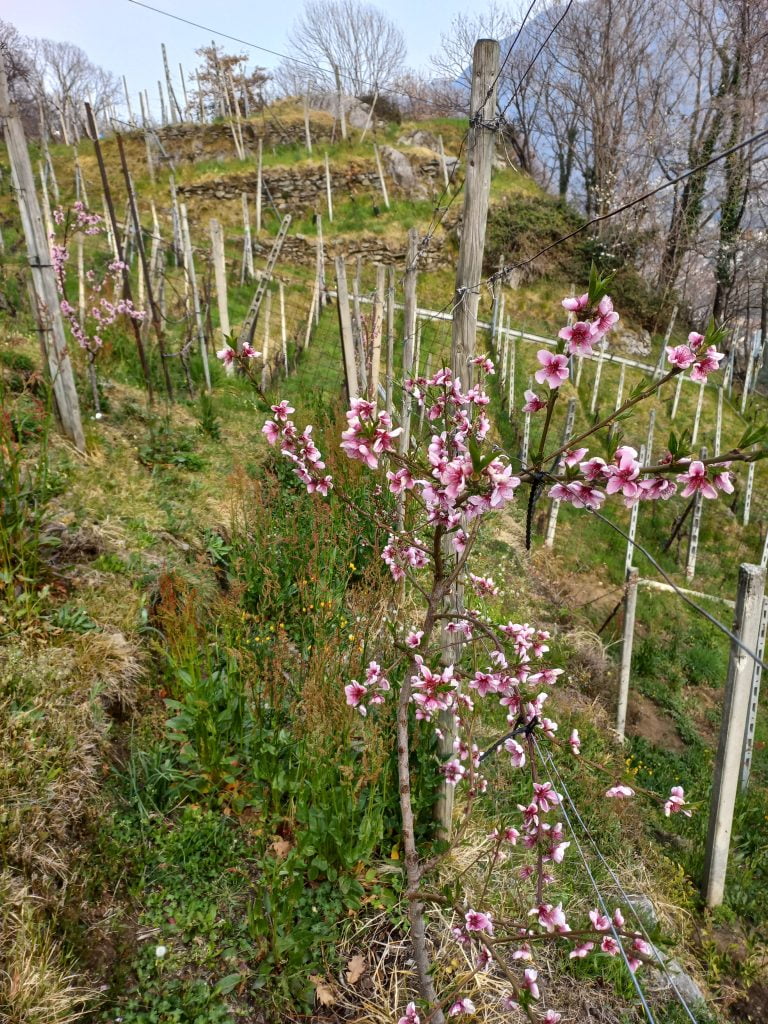
No blisters yet this year. They were watered in early March with a homemade garlic decoction. I’m going to spray them a little more before the end of March and we’ll see if it really works.
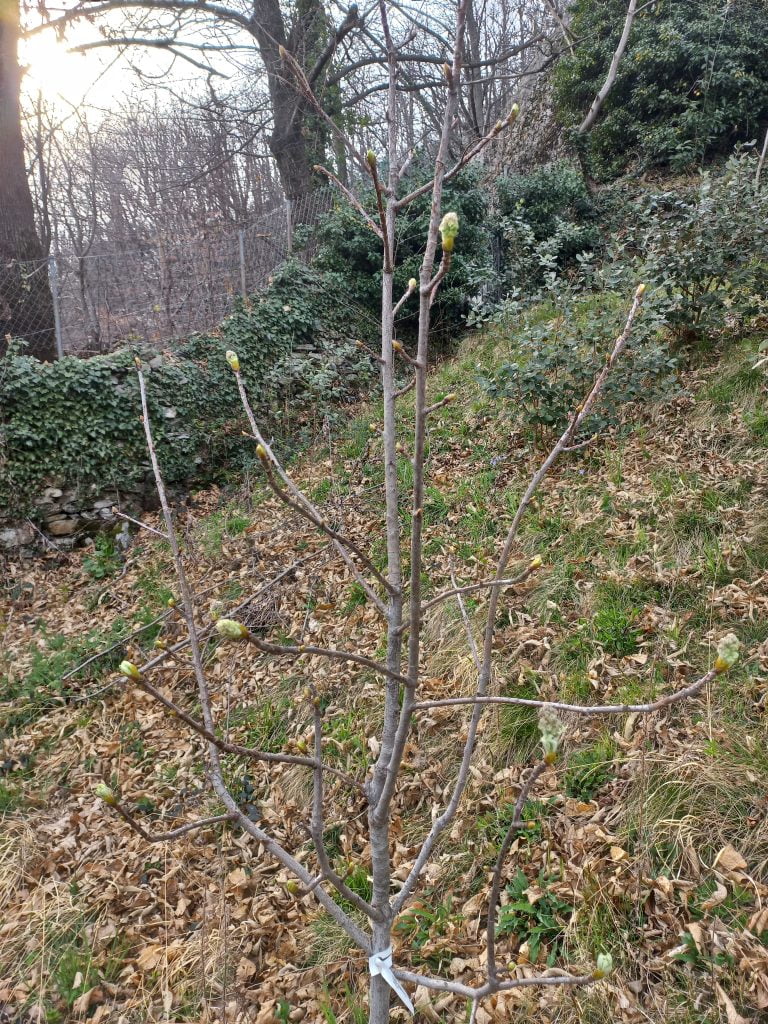
It wakes up slowly and grows very slowly too. 3 years and I haven’t seen a fruit yet.
Behind them are feijoa guava trees (Acca sellowiana).
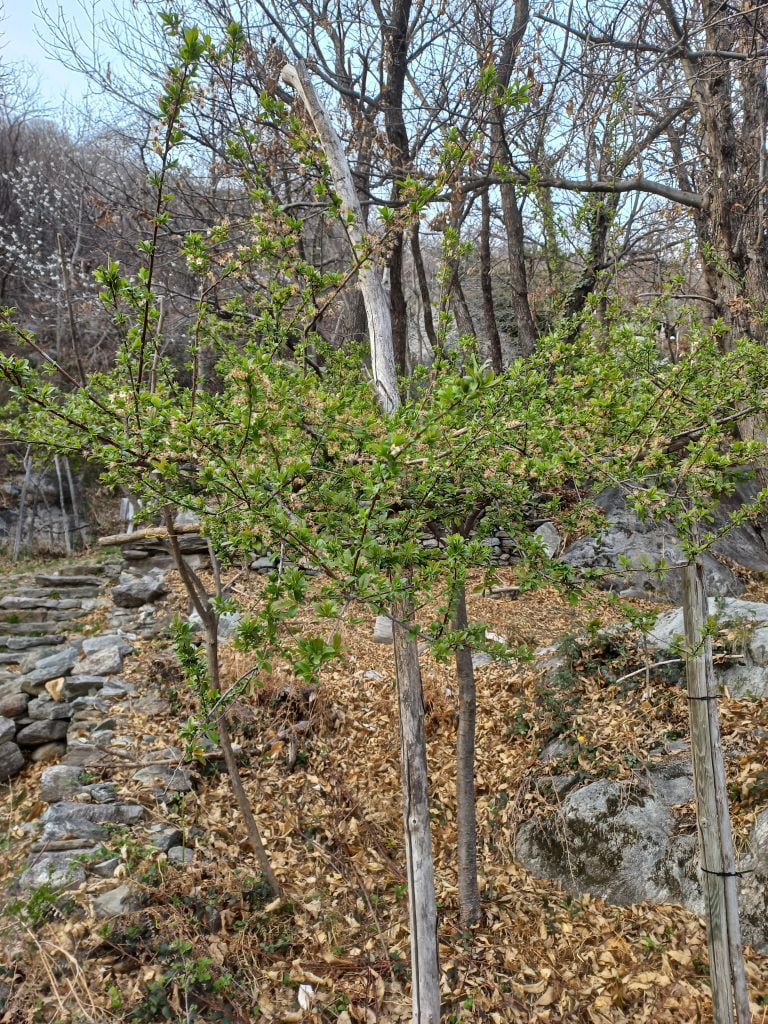
Planted in the woods for 5 years, branches bent into a parasol, it is now high enough to do without a fence while remaining safe from ungulates.
It has yielded very little fruit so far. I think I know why: you have to plant a second one to ensure cross-fertilization.
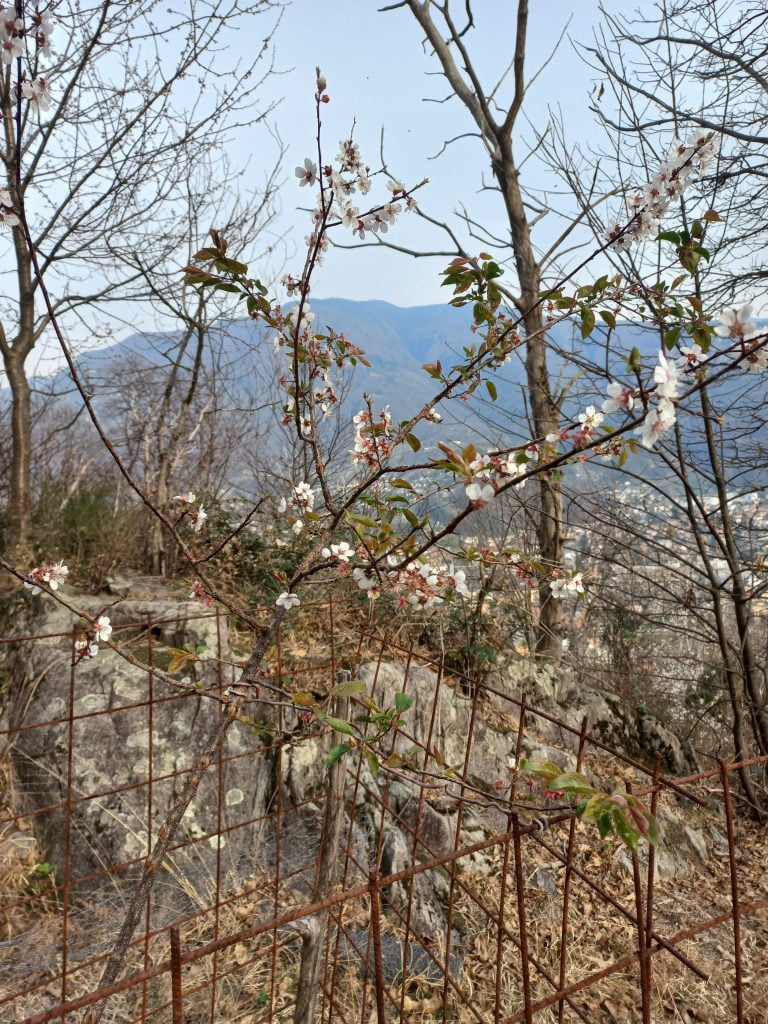

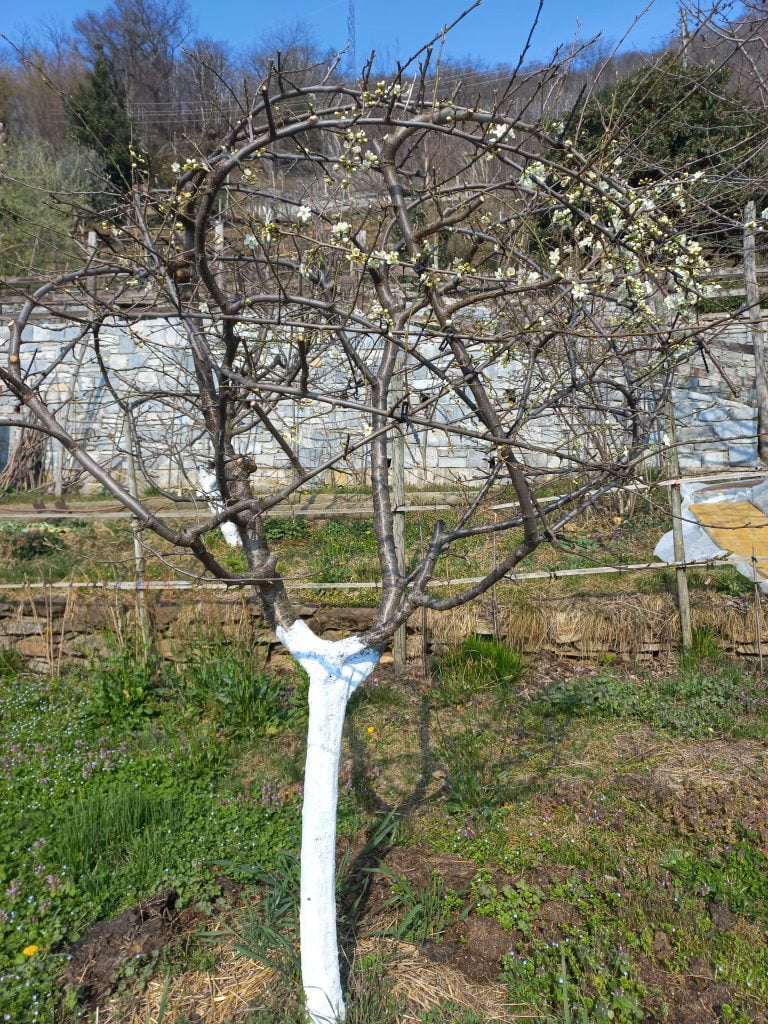
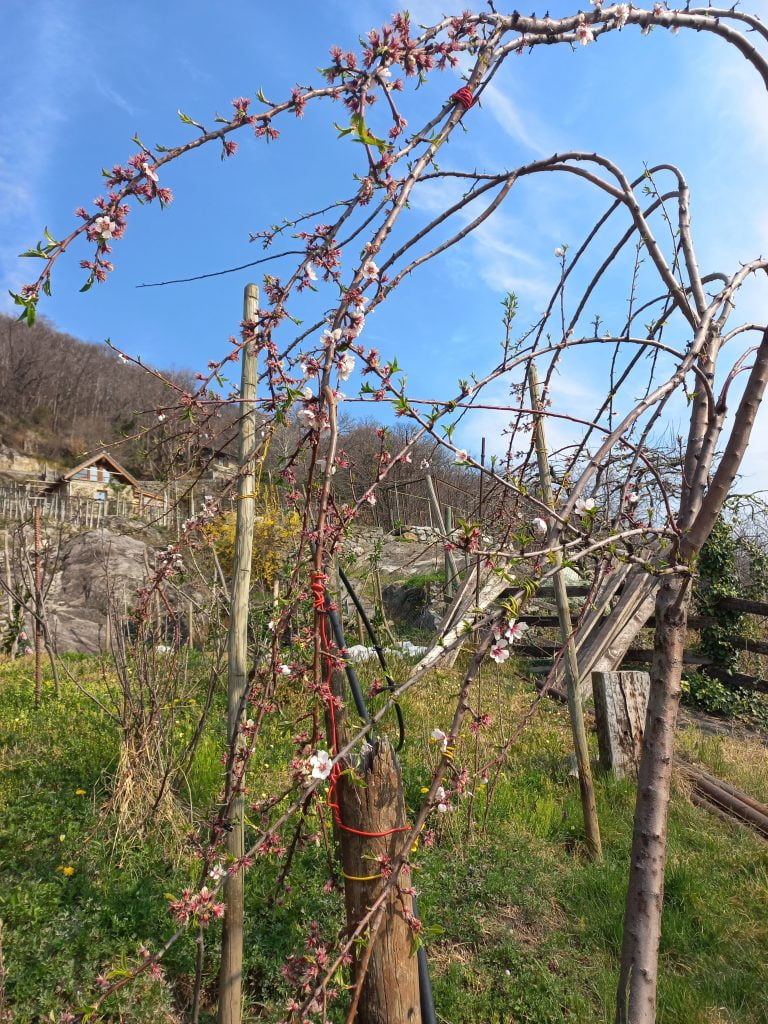
In bloom since mid-February, it is almost the end of the flowering period.
It has been planted for 3 years and already had almonds on all branches last fall. It is folded to be able to pick them without shaking the tree.
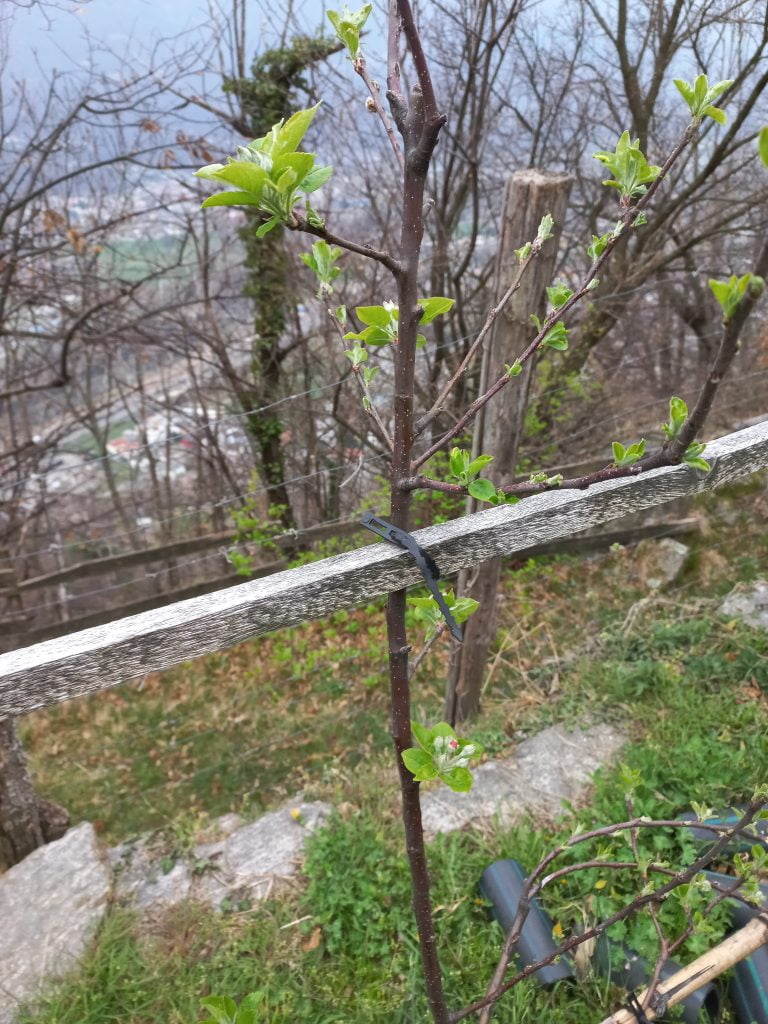
He’s just past winter and has his whole life ahead of him.
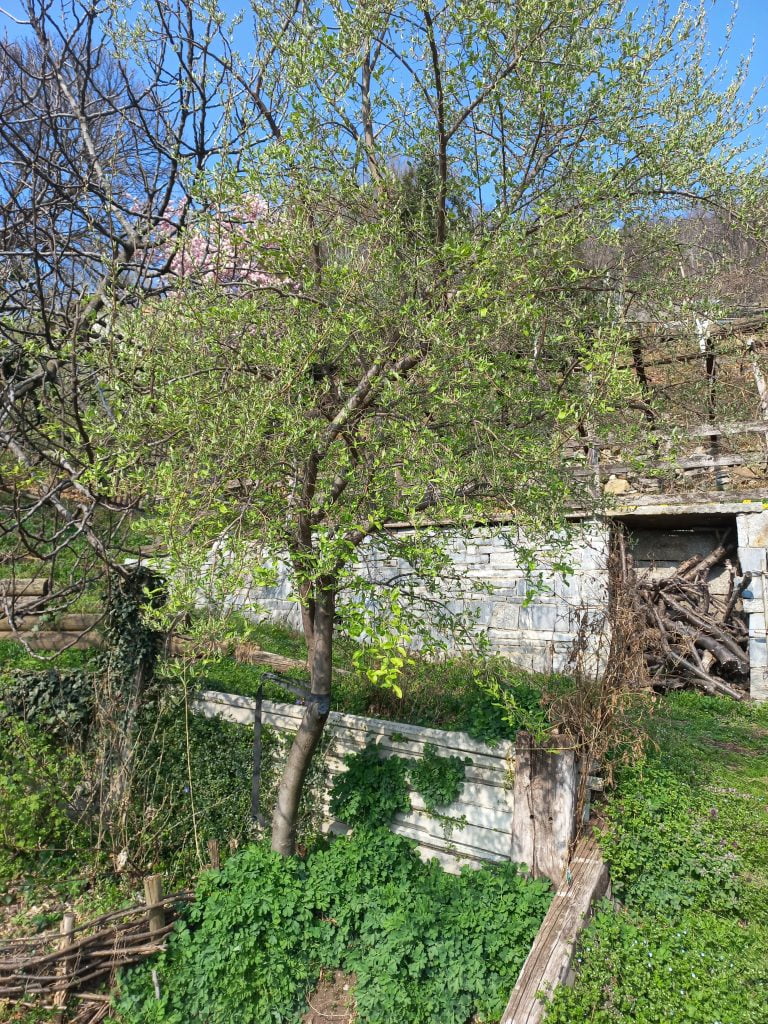
He produced two buckets full of berries already last year.
The Goumi is adapted to poor soils, it enriches its own soil with nitrogen. In a rich soil it grows at an impressive speed. It remains to find out how to use the fruits that it produces in profusion, small red berries with soft core. Goumi wine? To be invented.
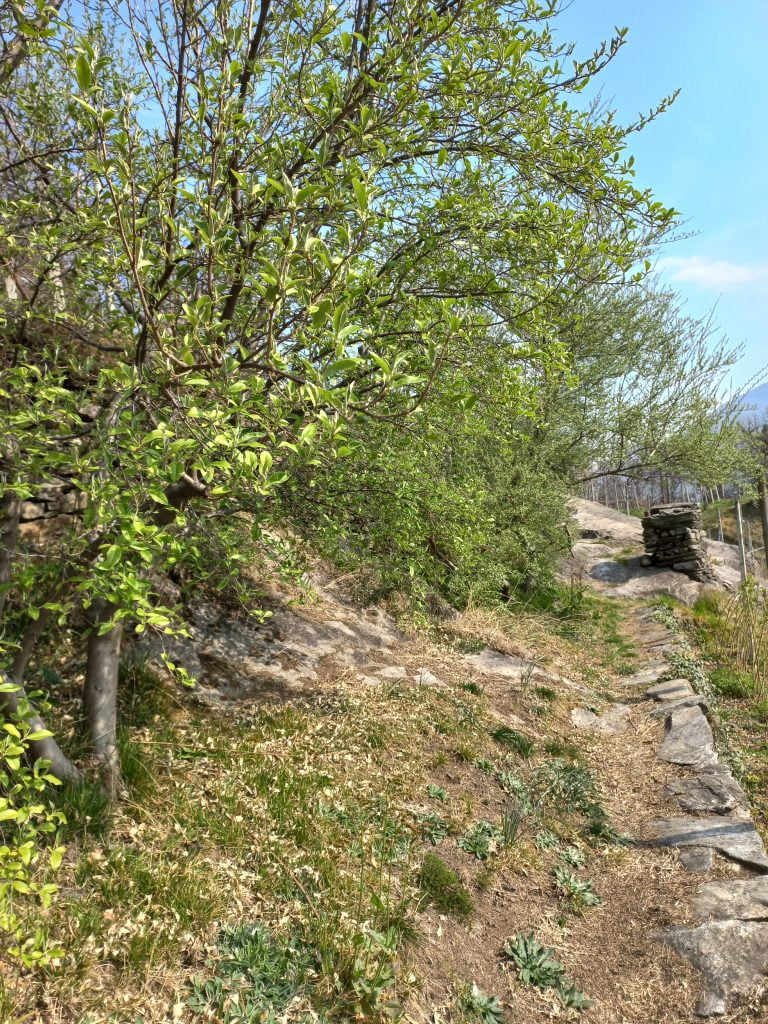
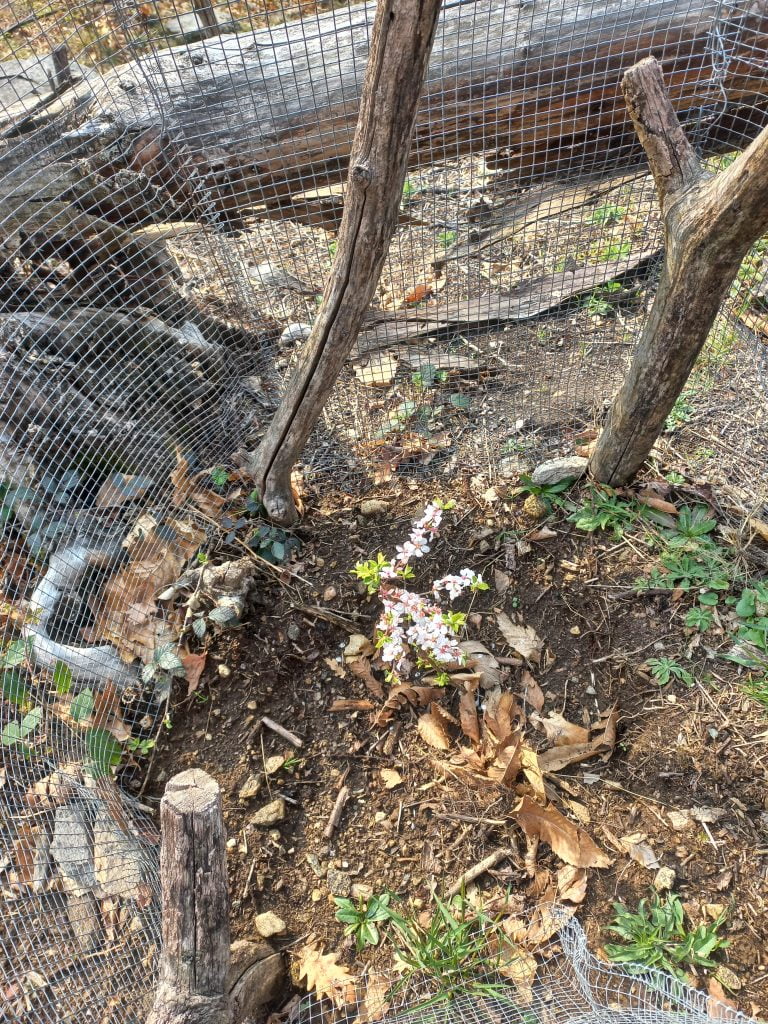
Tiny, planted this winter. But the first one in bloom, long before the real cherry trees.
It is in the fenced area, safe from ungulates. But it must be protected individually in spite of everything because of the badgers. The outside fence does not stop them and they eat all the young cherry trees. They love leaves and completely massacre small trees, the low branches of large ones too. But they don’t touch the cherries. Go understand badgers…
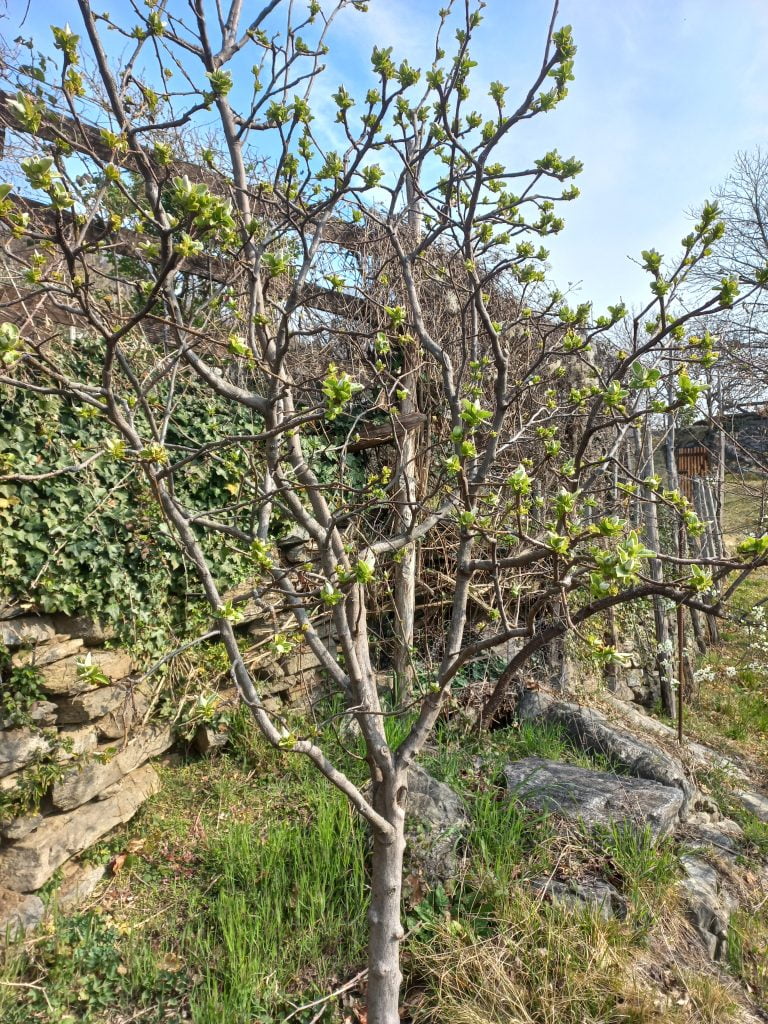
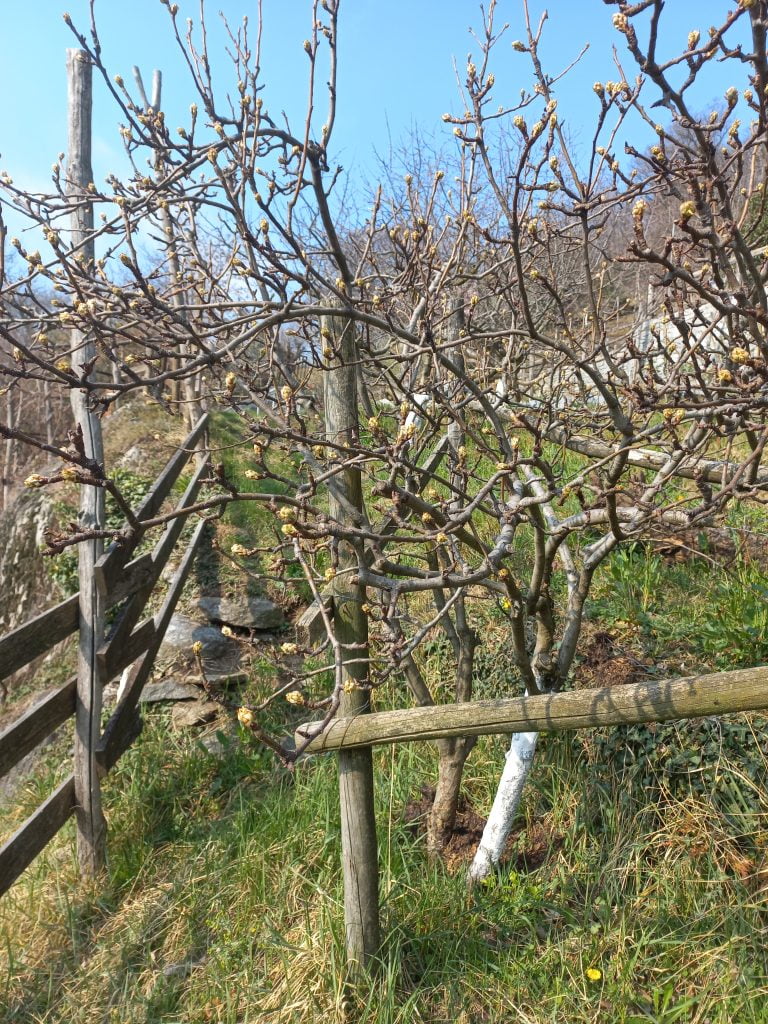

The blue fruits from last year are still on top. Not enough customers for medlars… it’s a special kind of fruit.
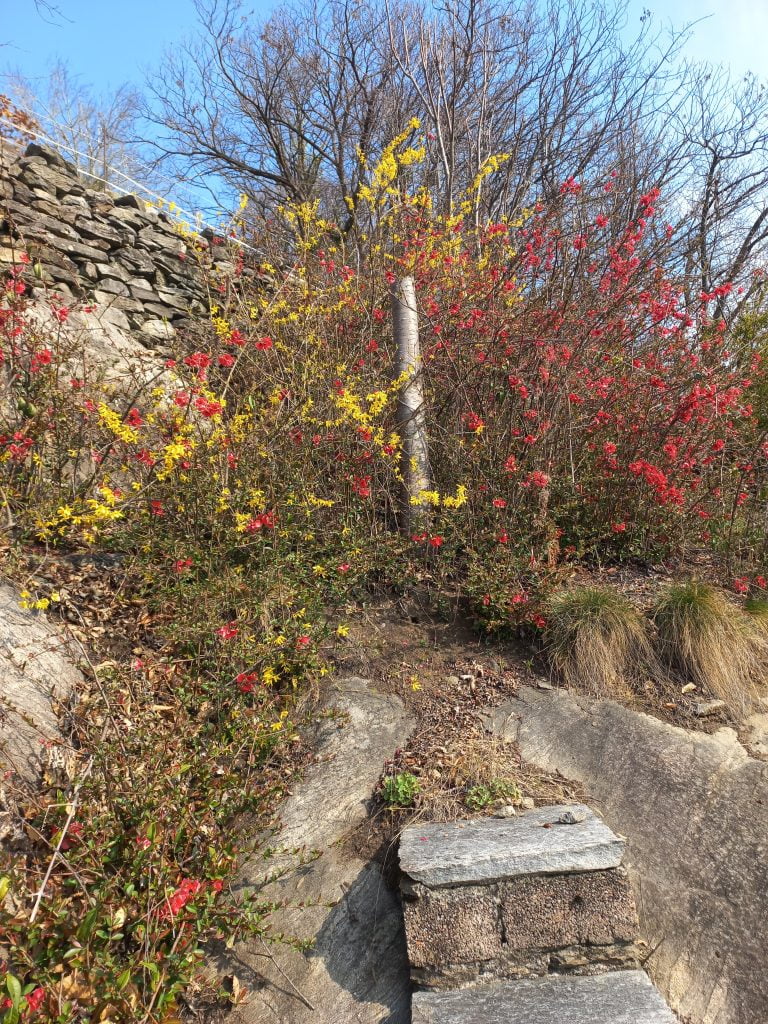
Who guesses the names of the two?

